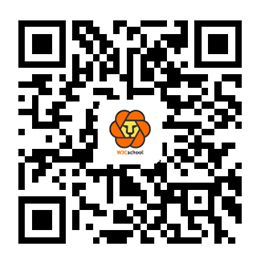Qt 一个简易画板的实现(Graphics View)
Qt 学习之路(32): 一个简易画板的实现(Graphics View)
这一次将介绍如何使用 Graphics View 来实现前面所说的画板。前面说了很多有关 Graphics View的好话,但是没有具体的实例很难说究竟好在哪里。现在我们就把前面的内容使用 Graphics View 重新实现一下,大家可以对比一下看有什么区别。
同前面相似的内容就不再叙述了,我们从上次代码的基础上进行修改,以便符合我们的需要。首先来看MainWindow 的代码:
mainwindow.cpp
#include "mainwindow.h"
MainWindow::MainWindow(QWidget *parent)
: QMainWindow(parent)
{
QToolBar *bar = this->addToolBar("Tools");
QActionGroup *group = new QActionGroup(bar);
QAction *drawLineAction = new QAction("Line", bar);
drawLineAction->setIcon(QIcon(":/line.png"));
drawLineAction->setToolTip(tr("Draw a line."));
drawLineAction->setStatusTip(tr("Draw a line."));
drawLineAction->setCheckable(true);
drawLineAction->setChecked(true);
group->addAction(drawLineAction);
bar->addAction(drawLineAction);
QAction *drawRectAction = new QAction("Rectangle", bar);
drawRectAction->setIcon(QIcon(":/rect.png"));
drawRectAction->setToolTip(tr("Draw a rectangle."));
drawRectAction->setStatusTip(tr("Draw a rectangle."));
drawRectAction->setCheckable(true);
group->addAction(drawRectAction);
bar->addAction(drawRectAction);
QLabel *statusMsg = new QLabel;
statusBar()->addWidget(statusMsg);
PaintWidget *paintWidget = new PaintWidget(this);
QGraphicsView *view = new QGraphicsView(paintWidget, this);
setCentralWidget(view);
connect(drawLineAction, SIGNAL(triggered()),
this, SLOT(drawLineActionTriggered()));
connect(drawRectAction, SIGNAL(triggered()),
this, SLOT(drawRectActionTriggered()));
connect(this, SIGNAL(changeCurrentShape(Shape::Code)),
paintWidget, SLOT(setCurrentShape(Shape::Code)));
}
void MainWindow::drawLineActionTriggered()
{
emit changeCurrentShape(Shape::Line);
}
void MainWindow::drawRectActionTriggered()
{
emit changeCurrentShape(Shape::Rect);
}由于 mainwindow.h 的代码与前文相同,这里就不再贴出。而 cpp 文件里面只有少数几行与前文不同。由于我们使用 Graphics View,所以,我们必须把 item 添加到 QGprahicsScene 里面。这里,我们创建了 scene 的对象,而 scene 对象需要通过 view 进行观察,因此,我们需要再使用一个 QGraphcisView 对象,并且把这个 view 添加到 MainWindow 里面。
我们把 PaintWidget 当做一个 scene,因此 PaintWidget 现在是继承 QGraphicsScene,而不是前面的 QWidget。
paintwidget.h
#ifndef PAINTWIDGET_H
#define PAINTWIDGET_H
#include <QtGui>
#include <QDebug>
#include "shape.h"
#include "line.h"
#include "rect.h"
class PaintWidget : public QGraphicsScene
{
Q_OBJECT
public:
PaintWidget(QWidget *parent = 0);
public slots:
void setCurrentShape(Shape::Code s)
{
if(s != currShapeCode) {
currShapeCode = s;
}
}
protected:
void mousePressEvent(QGraphicsSceneMouseEvent *event);
void mouseMoveEvent(QGraphicsSceneMouseEvent *event);
void mouseReleaseEvent(QGraphicsSceneMouseEvent *event);
private:
Shape::Code currShapeCode;
Shape *currItem;
bool perm;
};
#endif // PAINTWIDGET_Hpaintwidget.cpp
#include "paintwidget.h"
PaintWidget::PaintWidget(QWidget *parent)
: QGraphicsScene(parent), currShapeCode(Shape::Line), currItem(NULL), perm(false)
{
}
void PaintWidget::mousePressEvent(QGraphicsSceneMouseEvent *event)
{
switch(currShapeCode)
{
case Shape::Line:
{
Line *line = new Line;
currItem = line;
addItem(line);
break;
}
case Shape::Rect:
{
Rect *rect = new Rect;
currItem = rect;
addItem(rect);
break;
}
}
if(currItem) {
currItem->startDraw(event);
perm = false;
}
QGraphicsScene::mousePressEvent(event);
}
void PaintWidget::mouseMoveEvent(QGraphicsSceneMouseEvent *event)
{
if(currItem && !perm) {
currItem->drawing(event);
}
QGraphicsScene::mouseMoveEvent(event);
}
void PaintWidget::mouseReleaseEvent(QGraphicsSceneMouseEvent *event)
{
perm = true;
QGraphicsScene::mouseReleaseEvent(event);
}我们把继承自 QWidget 改成继承自 QGraphicsScene,同样也会有鼠标事件,只不过在这里我们把鼠标事件全部转发给具体的 item 进行处理。这个我们会在下面的代码中看到。另外一点是,每一个鼠标处理函数都包含了调用其父类函数的语句。
shape.h
#ifndef SHAPE_H
#define SHAPE_H
#include <QtGui>
class Shape
{
public:
enum Code {
Line,
Rect
};
Shape();
virtual void startDraw(QGraphicsSceneMouseEvent * event) = 0;
virtual void drawing(QGraphicsSceneMouseEvent * event) = 0;
};
#endif // SHAPE_Hshape.cpp
#include "shape.h"
Shape::Shape()
{
} Shape 类也有了变化:还记得我们曾经说过,Qt 内置了很多 item,因此我们不必全部重写这个 item。所以,我们要使用 Qt 提供的类,就不需要在我们的类里面添加新的数据成员了。这样,我们就有了不带有额外的数据成员的 Shape。那么,为什么还要提供 Shape 呢?因为我们在 scene 的鼠标事件中需要修改这些数据成员,如果没有这个父类,我们就需要按照 Code 写一个长长的 switch 来判断是那一个图形,这样是很麻烦的。所以我们依然创建了一个公共的父类,只要调用这个父类的 draw 函数即可。
line.h
#ifndef LINE_H
#define LINE_H
#include <QGraphicsLineItem>
#include "shape.h"
class Line : public Shape, public QGraphicsLineItem
{
public:
Line();
void startDraw(QGraphicsSceneMouseEvent * event);
void drawing(QGraphicsSceneMouseEvent * event);
};
#endif // LINE_H line.cpp
#include "line.h"
Line::Line()
{
}
void Line::startDraw(QGraphicsSceneMouseEvent * event)
{
setLine(QLineF(event->scenePos(), event->scenePos()));
}
void Line::drawing(QGraphicsSceneMouseEvent * event)
{
QLineF newLine(line().p1(), event->scenePos());
setLine(newLine);
} Line 类已经和前面有了变化,我们不仅仅继承了 Shape,而且继承了 QGraphicsLineItem 类。这里我们使用了 C++的多继承机制。这个机制是很危险的,很容易发生错误,但是这里我们的 Shape 并没有继承其他的类,只要函数没有重名,一般而言是没有问题的。如果不希望出现不推荐的多继承(不管怎么说,多继承虽然危险,但它是符合面向对象理论的),那就就想办法使用组合机制。我们之所以使用多继承,目的是让 Line 类同时具有 Shape 和 QGraphicsLineItem 的性质,从而既可以直接添加到QGraphicsScene 中,又可以调用 startDraw()等函数。
同样的还有 Rect 这个类:
rect.h
#ifndef RECT_H
#define RECT_H
#include <QGraphicsRectItem>
#include "shape.h"
class Rect : public Shape, public QGraphicsRectItem
{
public:
Rect();
void startDraw(QGraphicsSceneMouseEvent * event);
void drawing(QGraphicsSceneMouseEvent * event);
};
#endif // RECT_H rect.cpp
#include "rect.h"
Rect::Rect()
{
}
void Rect::startDraw(QGraphicsSceneMouseEvent * event)
{
setRect(QRectF(event->scenePos(), QSizeF(0, 0)));
}
void Rect::drawing(QGraphicsSceneMouseEvent * event)
{
QRectF r(rect().topLeft(),
QSizeF(event->scenePos().x() - rect().topLeft().x(), event->scenePos().y() - rect().topLeft().y()));
setRect(r);
} Line 和 Rect 类的逻辑都比较清楚,和前面的基本类似。所不同的是,Qt 并没有使用我们前面定义的两个 Qpoint 对象记录数据,而是在 QGraphicsLineItem 中使用 QLineF,在 QGraphicsRectItem 中使用 QRectF 记录数据。这显然比我们的两个点的数据记录高级得多。其实,我们也完全可以使用这样的数据结构去重定义前面那些 Line 之类。
这样,我们的程序就修改完毕了。运行一下你会发现,几乎和前面的实现没有区别。这里说“几乎”,是在第一个点画下的时候,scene 会移动一段距离。这是因为 scene 是自动居中的,由于我们把 Line 的第一个点设置为(0, 0),因此当我们把鼠标移动后会有一个偏移。
看到这里或许并没有显示出 Graphics View 的优势。不过,建议在 Line 或者 Rect 的构造函数里面加上下面的语句,
setFlag(QGraphicsItem::ItemIsMovable, true);
setFlag(QGraphicsItem::ItemIsSelectable, true); 此时,你的 Line 和 Rect 就已经支持选中和拖放了!值得试一试哦!不过,需要注意的是,我们重写了 scene 的鼠标控制函数,所以这里的拖动会很粗糙,甚至说是不正确,你需要动动脑筋重新设计我们的类啦!
本文出自 “豆子空间” 博客,请务必保留此出处 http://devbean.blog.51cto.com/448512/193918

 免费 AI IDE
免费 AI IDE



更多建议: